A block of mass M slides along the sides of a pot as shown in the Figure.The walls of the pot are frictionless and the base PQ has coefficient of friction 0.2 .If the block is released from the top of the side,which is 15cm high,where will the block come to rest? Given that the length of the base PQ is 30cm.
Step by step video & image solution for A block of mass M slides along the sides of a pot as shown in the Figure.The walls of the pot are frictionless and the base PQ has coefficient of friction 0.2 .If the block is released from the top of the side,which is 15cm high,where will the block come to rest? Given that the length of the base PQ is 30cm. by Physics experts to help you in doubts & scoring excellent marks in Class 11 exams.
Updated on:21/07/2023Similar Questions
A block of mass m slides along a frictionless surfce as shown in the figure. If it is releases from rest t A what is its speed at B?
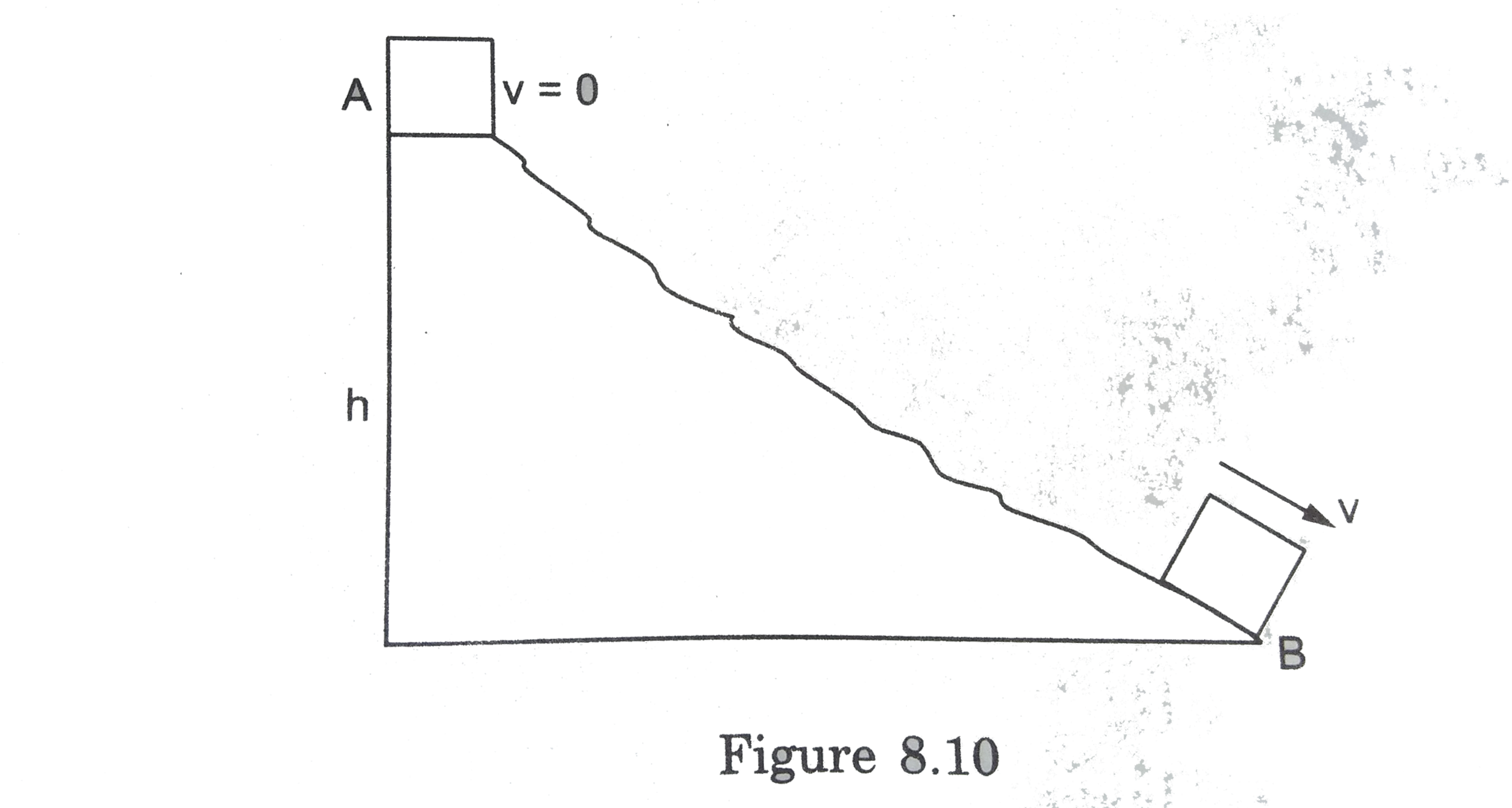
View SolutionA small block of mass m slides along a smooth frictional track as shown in the figure. If it starts from rest at P, what is the resultant force acting on it at Q?
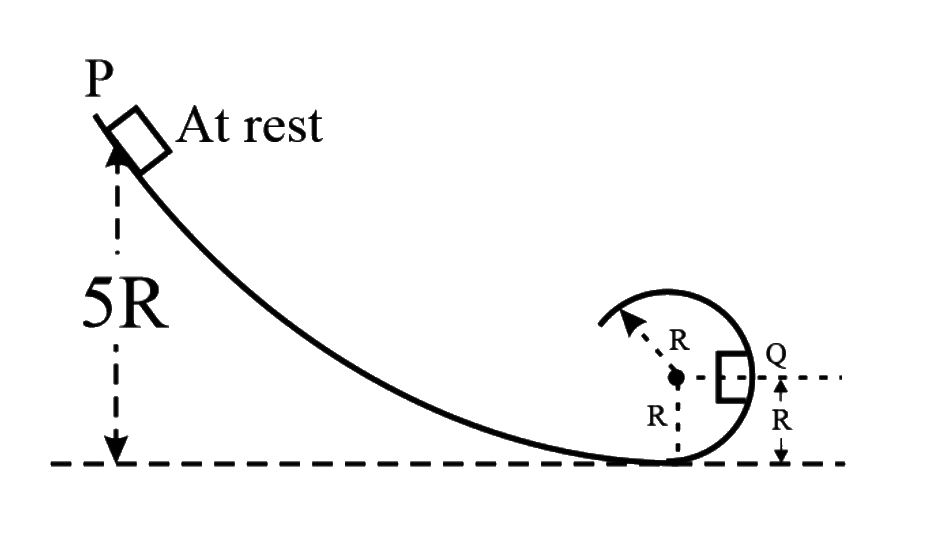
View Solution
Knowledge Check
A block of mass 2kg is connected with a spring of natural length 40cm of force constant K=200N/m. The cofficient of friction is μ=0.5. When released from the given position, acceleration of block will be
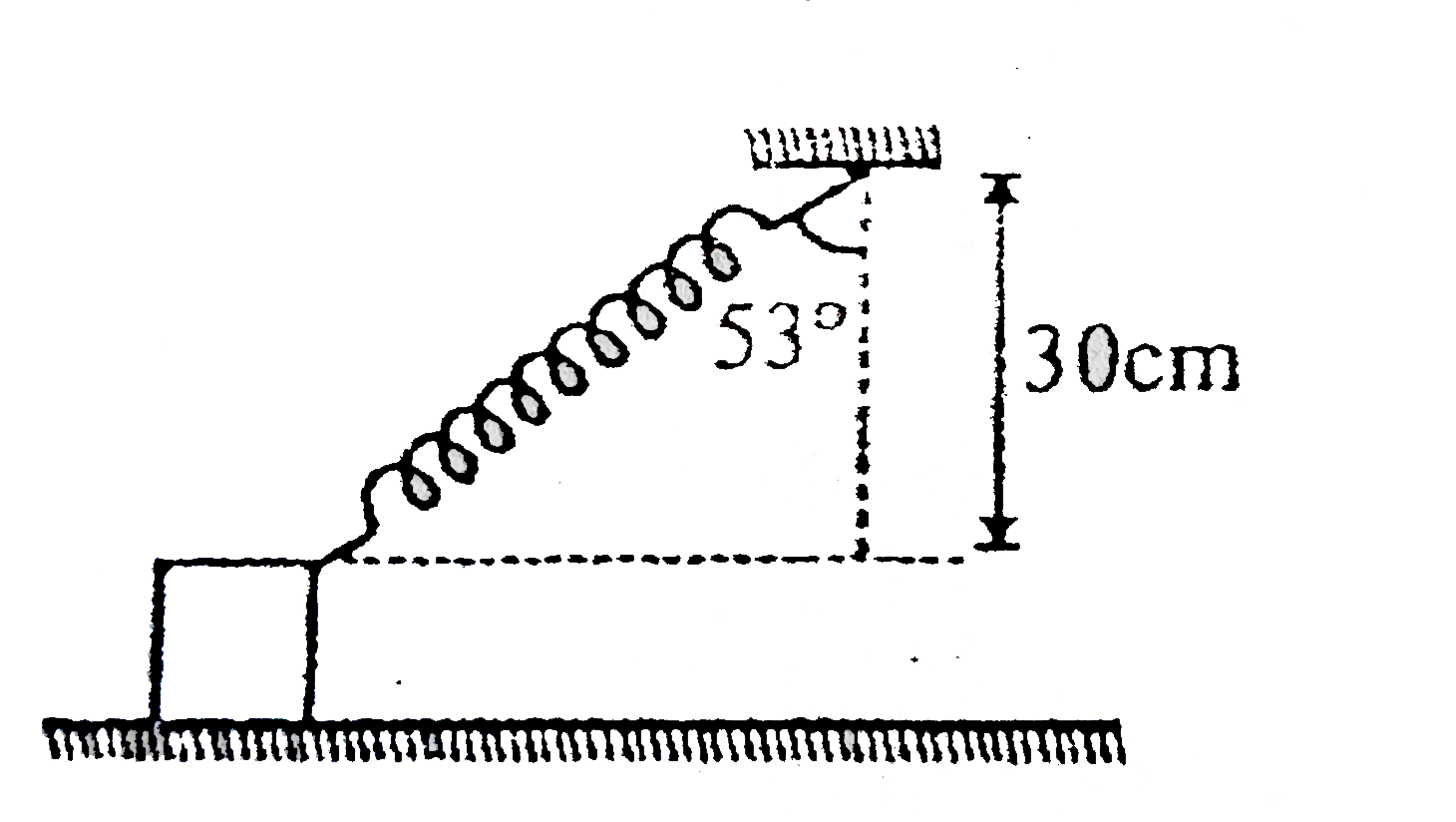 AzeroB2m/s2C6m/s2D8m/s2
AzeroB2m/s2C6m/s2D8m/s2A block of mass M is placed on the top of a bigger block of mass 10 M as shown in figure. All the surfaces are frictionless. The system is released from rest, then the distance moved by the bigger block at the instant the smaller block reaches the ground :
 A0.22 mB0.20 mCzeroD0.24 m
A0.22 mB0.20 mCzeroD0.24 mA block of mass m is placed on the top of another block of mass M as shown in the figure. The coefficient of friction between them is μ.
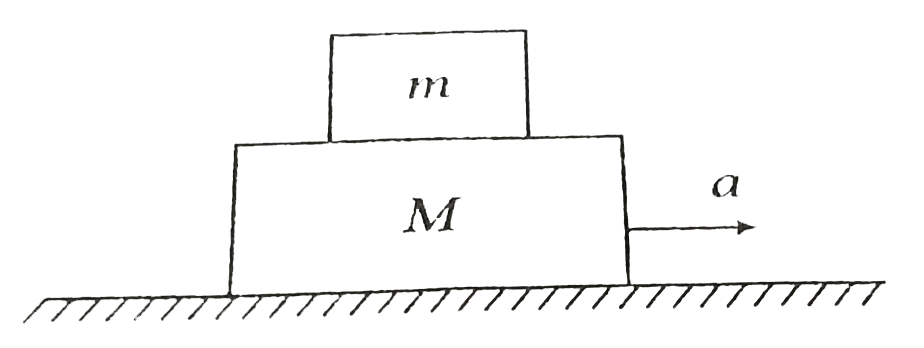
The maximum acceleration with which the block M may move so that m also moves along with it isAμgBμMmgCμmMgDgμ
In the given figure if system is released from rest,then find the minimum value of coefficient of friction such that block A of mass 2m does not move.
View SolutionA block of mass m is released from the top of a wedge of mass M as shown in figure. Find the displacement of wedges on the horizontal ground when the block reaches the bottom of the wedges. Neglect friction everywhere.
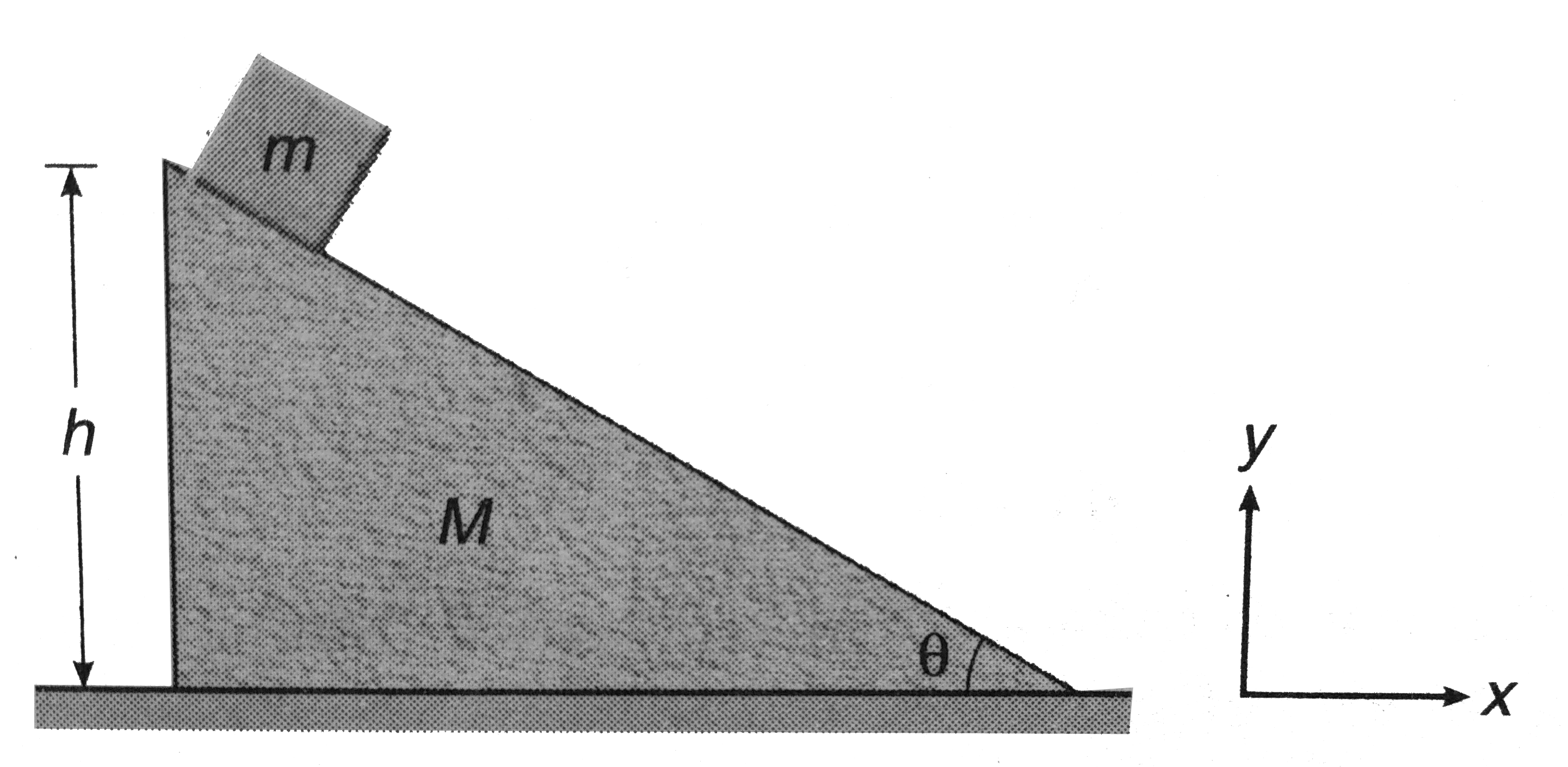
View SolutionA particle slides along a track with elevated ends and a flat central part as shown in figure. The flat part has a length l=3m. The curved portions of the track are frictionless. For the flat part, the coefficient of kinetic friction is μk=0.2. The particle is released at point A which is at height h=1.5m above the flat part of the track. Where does the particle finally come to rest?
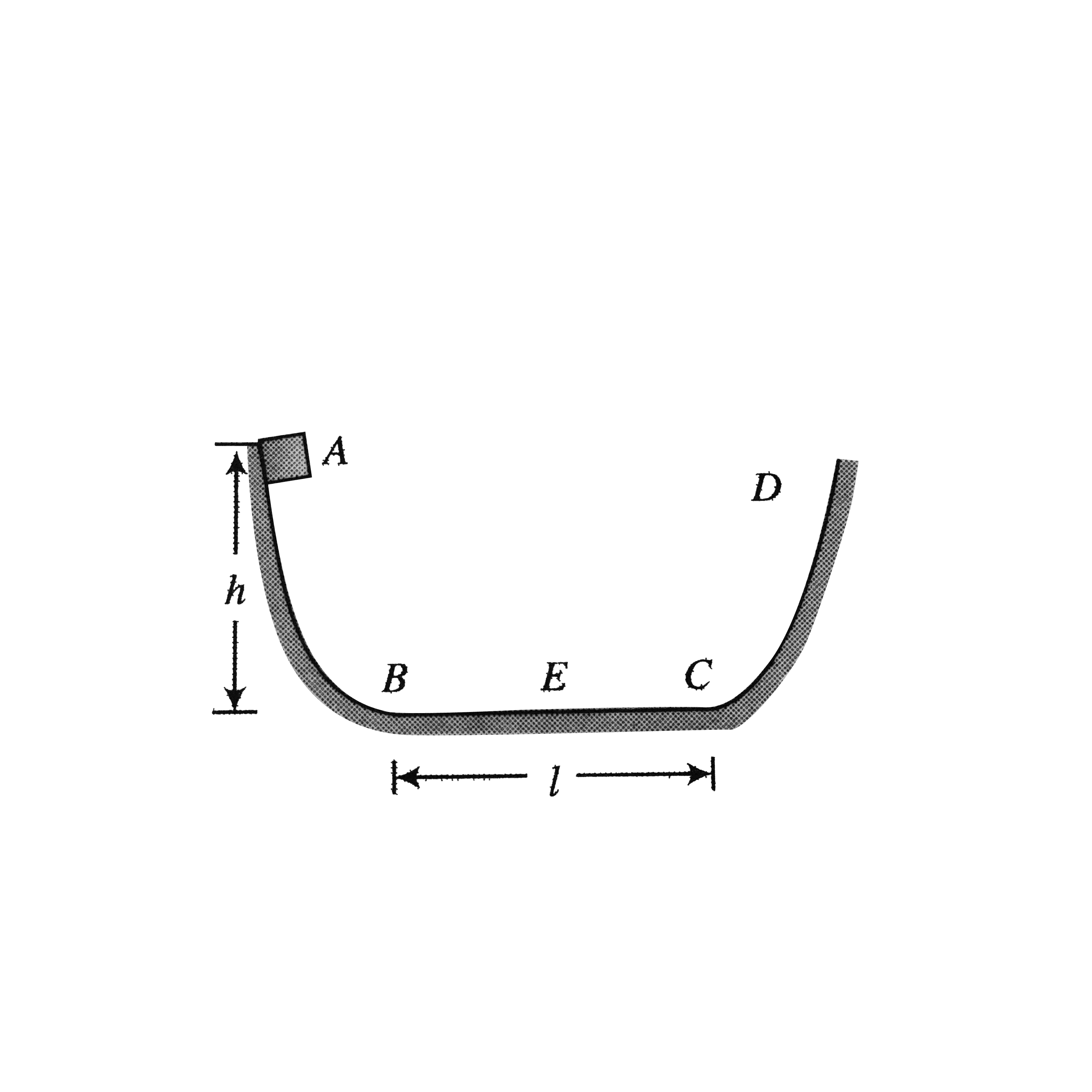
View SolutionA block of mass 2 m is pulled along a horizontal frictionless surface by a rope of mass m as shown in the figure given. What force is exerted by the rope on the block ?

View SolutionTwo block of masses M and m are connected to each other by a massless string and spring of force constant k as shown in the figure. The spring passes over a frictionless pulley connected rigidly to the egde of a stationary block A. The coefficient of friction between block M and plane horizontal surface of A is μ. The block M slides over the horizontal top surface of A and block m slides vertically downward with the same speed. The mass M is equal to
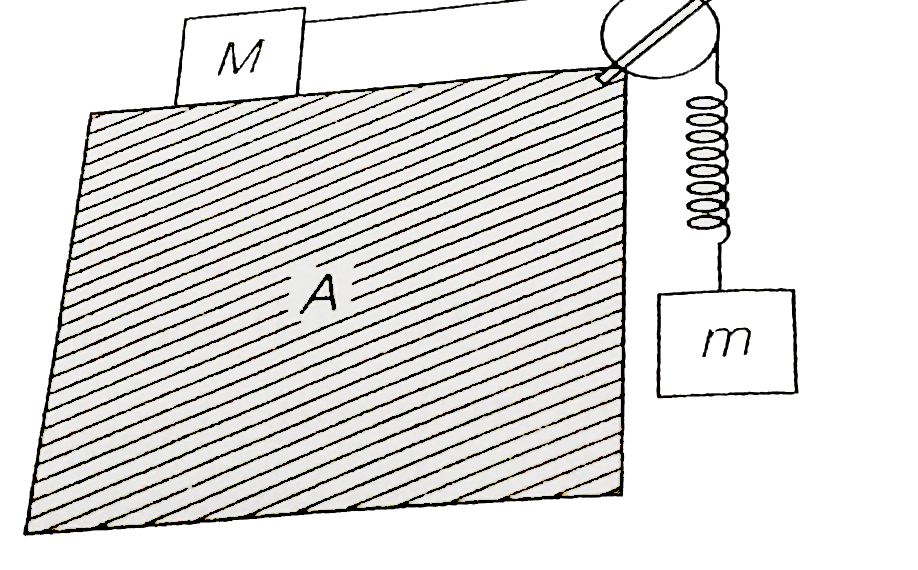
View Solution